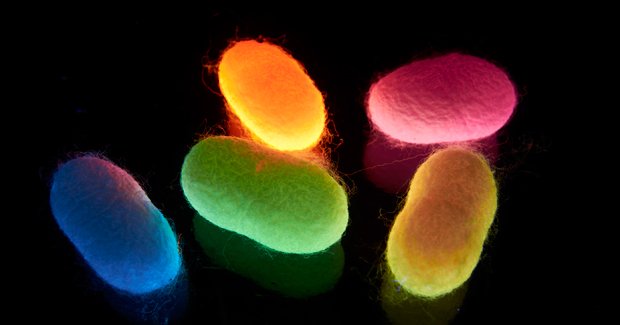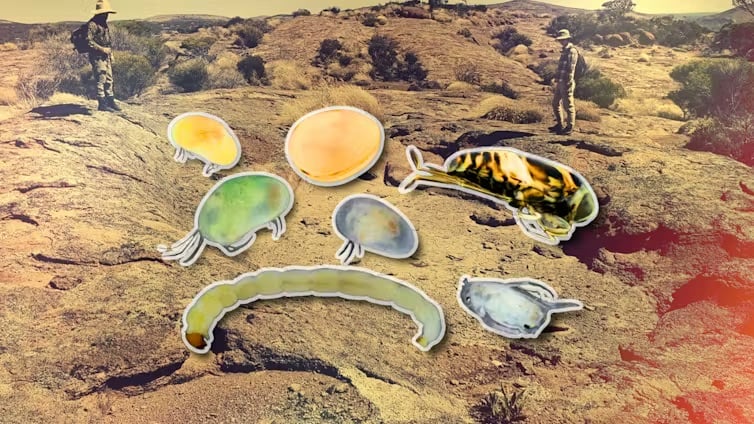Silkworms made to spin coloured silk

SILK WORMS THAT PRODUCE vibrantly coloured and luminescent silks have been created by scientists in Singapore. The resulting fibre offers a cheap way to circumvent the dying process and may even have medical applications.
“The new, more environmentally friendly method allows us to integrate colours into the very fabric of silk and does away with the need for manual dyeing,” says Dr Natalia Tansil, lead researcher behind the technology at the Institute of Materials Research and Engineering (IMRE) in Singapore.
By feeding silkworms a mulberry mixture containing fluorescent dye, Natalia’s team was able to harvest brightly coloured silk that is structurally unaffected, but which also has luminescent, or glowing, properties. The dye molecules are ingrained within the silk filaments to create permanent colour.
Green alternative
The process “provides a green alternative method of dyeing silk for the silk industry by reducing the vast amounts of water and dyes used in the labour-intensive conventional dyeing process,” says Eugene Low Ooi Meng, IMRE spokesperson.

The technology is simple and cheap enough to be translated to an industrial scale, he says. “The only difference between the proposed process and the current [cultivating] practice is the addition of the dye into the silkworm diet for the last four days of the larva stage. The resulting coloured cocoon can then be harvested and processed using normal processes.”
They researchers are currently working with potential industry partners to scale up the process and bring a product to market within a few years. “For commercialisation, we aim to create a full range of colour and improve reproducibility and consistency of colour intensity,” Eugene told Australian Geographic.
The findings, detailed in the journal Material Views, show for the first time that the uptake of both colour and luminescence is possible in live silk worms via food.
Simple and innovative
“This is a simple and innovative method to generate coloured silk,” comments Dr Tara Sutherland, an expert on biomaterials with the CSIRO in Canberra. “The result also has implications that extend beyond introduction of colour into the silk – it raises the possibility of introduction of other compounds into the material through the diet [of silkworms],” she says.
Natalia’s research team envisage creating silk with antibacterial, anticoagulent and anti-inflammatory properties that could be used in wound dressing or even as biomedical frameworks for repairing damaged tissues. Silk wound dressings could also be created that have compounds with monitoring or sensing capabilities.
“We were inspired by the beauty and utility of silk. It is soft and lustrous but incredibly strong at the same time. Silk has also been used for sutures for thousands of years,” says Eugene. “The utility of silk is greatly enhanced by adding other substances such as dyes onto the core silk filament. So we set out to find a simple yet effective way to incorporate functional materials into silk, not only dyes but also drugs and antibiotics.”
RELATED STORIES




